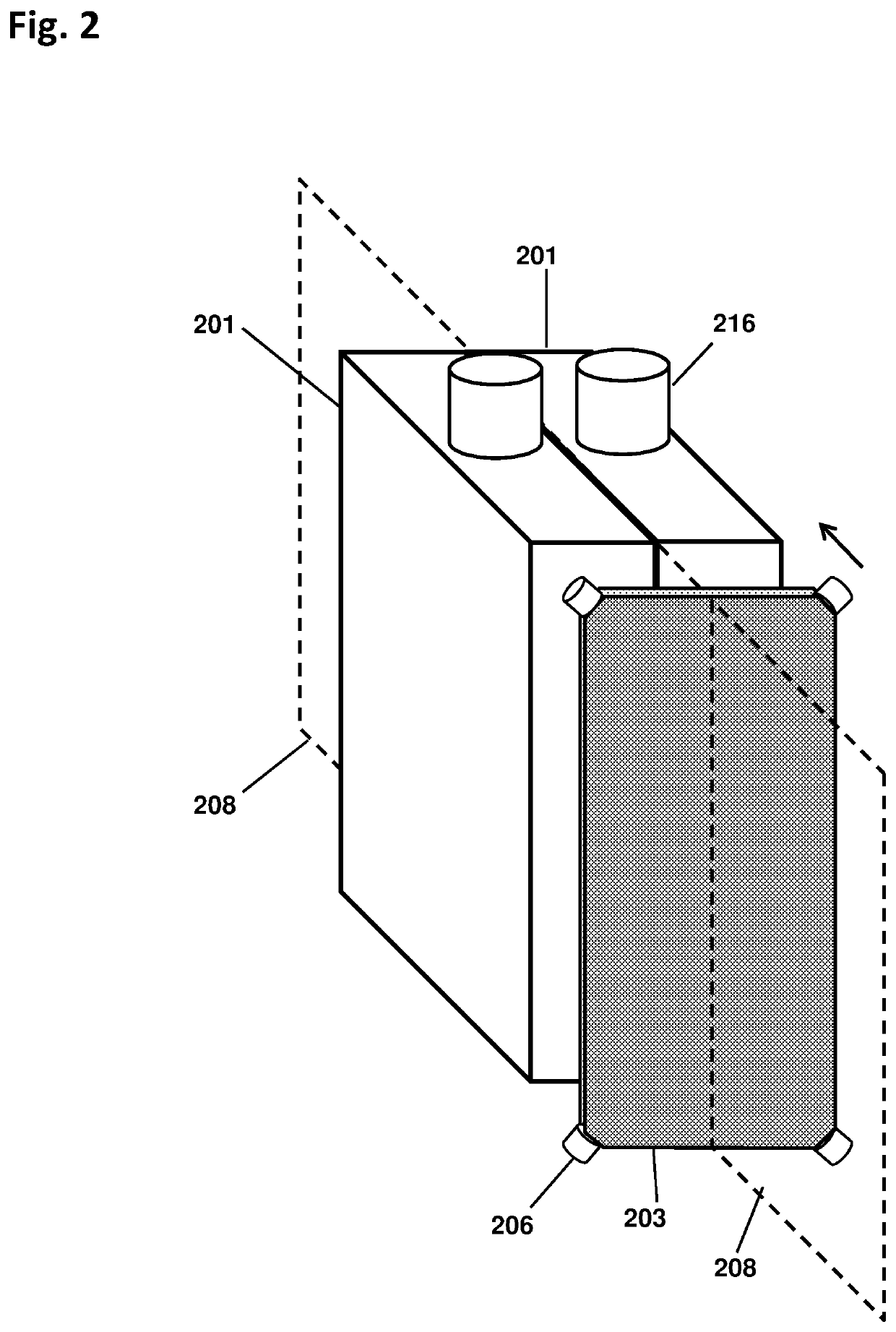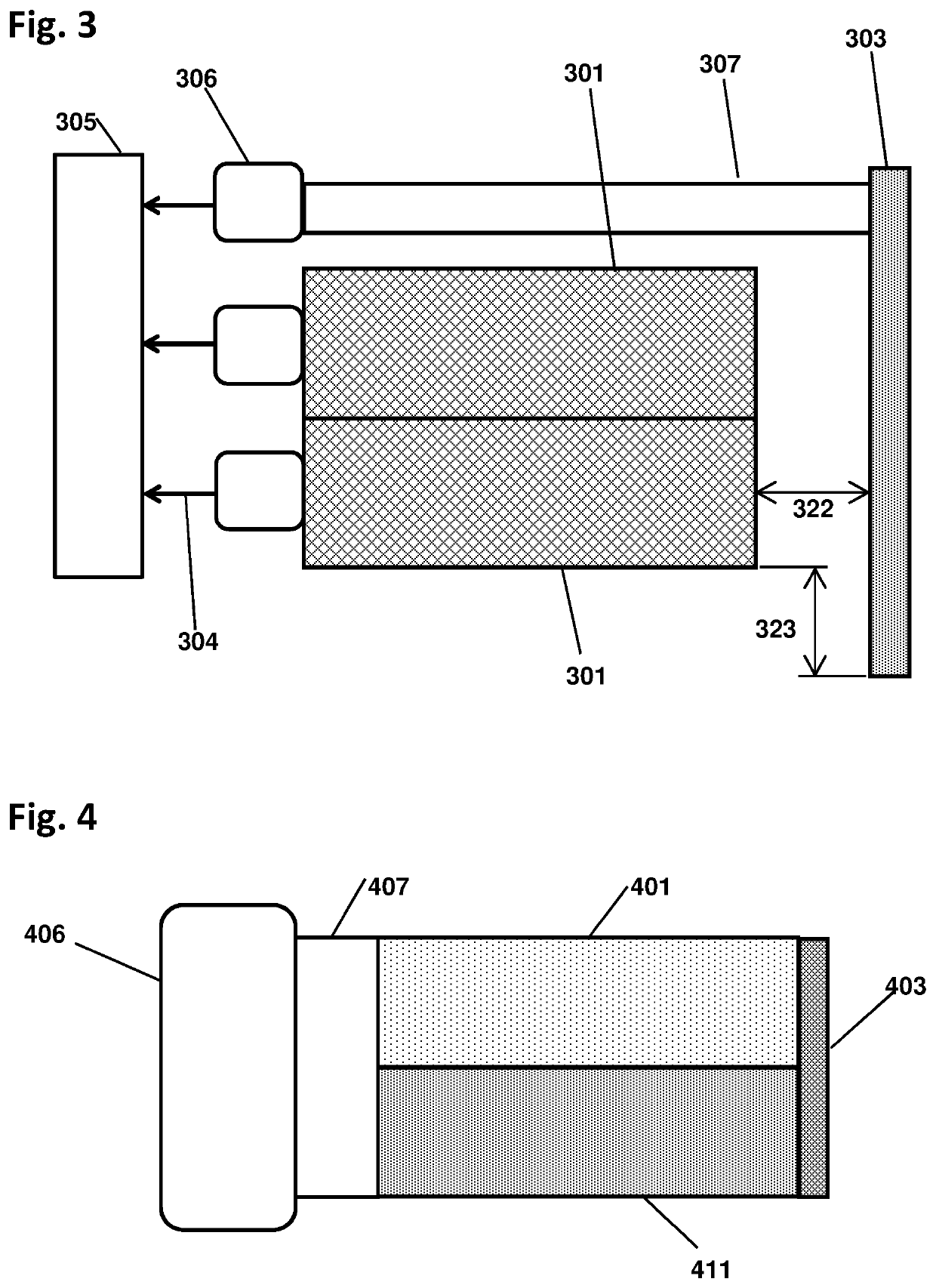One-Dimensional Directional Shieldless Particle Detector
a one-dimensional shieldless and detector technology, applied in the field of nuclear weapon detection, can solve the problem of difficult detection of nuclear weapons
- Summary
- Abstract
- Description
- Claims
- Application Information
AI Technical Summary
Benefits of technology
Problems solved by technology
Method used
Image
Examples
Embodiment Construction
[0035]In the following description, reference is made to the accompanying drawings in which it is shown by way of illustration specific embodiments in which the invention can be practiced. Not all of the described components are necessarily drawn to scale in order to emphasize certain features and to better facilitate the reader's conception of the disclosed embodiments. It is to be understood that other embodiments can be used and structural changes can be made without departing from the scope of the embodiments of disclosed herein.
[0036]Disclosed herein is a directional radiation detector device (the “device”) for localizing clandestine nuclear weapons and any other radioactive source or sources to be localized (the “source”). In some embodiments, the device may be configured to detect gamma rays or neutrons or both (the “particles”) from the source, and may indicate the angle of the source relative to the device, including the sign and magnitude of the angle (the “source angle”),...
PUM
 Login to View More
Login to View More Abstract
Description
Claims
Application Information
 Login to View More
Login to View More - R&D
- Intellectual Property
- Life Sciences
- Materials
- Tech Scout
- Unparalleled Data Quality
- Higher Quality Content
- 60% Fewer Hallucinations
Browse by: Latest US Patents, China's latest patents, Technical Efficacy Thesaurus, Application Domain, Technology Topic, Popular Technical Reports.
© 2025 PatSnap. All rights reserved.Legal|Privacy policy|Modern Slavery Act Transparency Statement|Sitemap|About US| Contact US: help@patsnap.com



